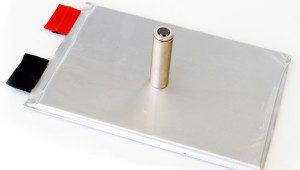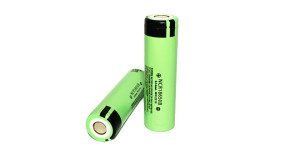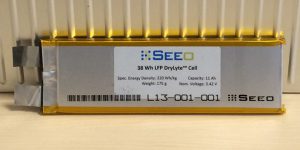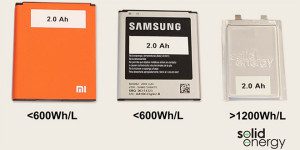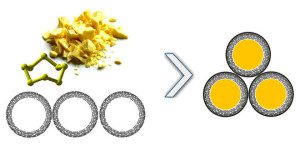Elon Musk and JB Straubel covered a lot of ground in a nearly-three-hour performance at Tesla’s 2016 annual shareholder meeting. They recapped the history of the company, explained why Supercharging will not be free for Model 3 buyers, and discussed their plans to remake the auto production process. They also made some very interesting remarks… Read more »
Search Results Found For: "silicon anode"
Enevate says its batteries can charge 5-10 times faster than conventional Li-ion
California-based Enevate Corporation has announced an “ultrafast charging” feature for its batteries, which has been demonstrated to provide a 90% charge in 15 minutes while increasing capacity compared to current Li-ion batteries. Enevate’s HD-Energy Technology uses silicon-dominant composite anodes, and the company claims an 25-50% increase in energy density over conventional graphite anode cells. The… Read more »
European researchers: Our new Li-sulfur battery is more energy-dense, cheaper and safer
EU-funded researchers in the LISSEN (Lithium Sulfur Superbattery Exploiting Nanotechnology) project have developed a new lithium-sulfur battery that uses lithiated silicon as the anode and a nanostructured sulfur-carbon composite as the cathode. The team says its battery offers an energy density at least three times higher than that of current lithium battery technology, as well… Read more »
Analyst: Tesla will reduce battery cost 50% by 2020
There’s a lot of future potential baked into Tesla’s stock price, but many stock pundits believe it’s headed even higher. Jefferies analyst Dan Dolev recently raised his price target for TSLA to $365.00, based on his belief that the company will be successful at lowering battery costs, and that this will improve its gross margins…. Read more »
Solid-state battery innovator Seeo acquired by Bosch
Giant German automotive supplier Bosch has announced that it will acquire the Silicon Valley startup Seeo, a pioneer in solid-state battery technology. Seeo’s cell design combines a solid lithium metal anode with a conventional porous lithium iron phosphate cathode and Seeo’s proprietary DryLite solid polymer electrolyte. Seeo says its cells achieve specific energy of around… Read more »
Small businesses score DOE funding for EV technology R&D
The DOE has selected 162 projects to receive $26.6 million in the 2015 Small Business Innovation Research and Small Business Technology Transfer (SBIR/STTR) awards. About 16 of these are vehicle-related, encompassing such technologies as batteries, power electronics and hydrogen fuel cells. Under the SBIR and STTR programs, federal agencies with large R&D budgets set aside… Read more »
ORNL breakthrough could enable wider application of graphene composites
Graphene, a two-dimensional hexagonal lattice of carbon atoms, has great potential in a number of EV-related applications, including anodes, lithium-sulfur batteries and ultracapacitors. With current technology, however, it’s impractical to use on a large scale, and researchers have been limited to using small flakes of the material. Now a team of researchers at the DOE’s… Read more »
LG Chem Power CEO: We’re the Li-ion leader for PEVs because of material science
Q&A with LG Chem Power’s CEO: Dr. Prabhakar Patil on how the company became a Li-ion battery front-runner, the economics of building batteries, and why it spends little energy on what comes after lithium. Among Tier 1 automotive suppliers of lithium-ion cells, LG Chem is off to a clear lead, based on the number of announced… Read more »
SolidEnergy hopes to double EV battery range by 2017
SolidEnergy, an MIT spin-out company commercializing solid electrolyte technology, plans to release a 20 Ah EV battery in 2017, which it says will offer more than two times the range of current Li-ion batteries. The core of SolidEnergy’s technology is a Solid Polymer Ionic Liquid (SPIL) electrolyte, which enables the use of an ultra-thin lithium… Read more »
GM researchers develop improved Li-Sulfur cathode material
A GM R&D team has developed a way to improve the cycling stability and Coulombic efficiency of lithium-sulfur (Li/S) batteries. The new paper, Polydopamine-Coated, Nitrogen-Doped, Hollow Carbon-Sulfur Double-Layered Core-Shell Structure for Improving Lithium-Sulfur Batteries, appears in the ACS journal Nano Letters. Lithium-sulfur chemistry theoretically promises impressive energy capacity, but practical Li-S batteries have been hindered… Read more »




